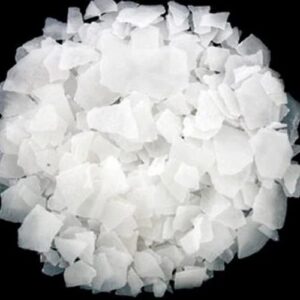Caustic Soda Flakes Product Description
Caustic Soda Flakes, also known as Sodium Hydroxide (NaOH), are a highly versatile and essential chemical compound widely used in various industries. These white, solid flakes are hygroscopic, meaning they readily absorb moisture from the air. Caustic soda is known for its strong alkaline properties, making it an effective agent for neutralizing acids and breaking down organic materials. Due to its high solubility in water, it is often used in aqueous solutions for various applications.
Key Features:
- Appearance: White, solid flakes
- Chemical Formula: NaOH
- Molecular Weight: 40.00 g/mol
- Solubility: Highly soluble in water
- pH Level: Strongly alkaline (pH > 13)
Common Uses:
- Chemical Manufacturing: Used in the production of various chemicals, including soaps, detergents, and textiles.
- Water Treatment: Employed to adjust pH levels in water treatment processes.
- Food Industry: Utilized in food processing, such as curing olives and making pretzels.
- Pulp and Paper: Essential in the pulping process to break down wood fibers.
- Cleaning Agents: Found in many industrial and household cleaning products due to its ability to dissolve grease and organic matter.
Technical Data
| Property | Value |
|---|---|
| Chemical Name | Sodium Hydroxide |
| CAS Number | 1310-73-2 |
| Appearance | White flakes |
| Molecular Weight | 40.00 g/mol |
| Density | 2.13 g/cm³ |
| Melting Point | 318 °C (604 °F) |
| Boiling Point | 1380 °C (2516 °F) |
| Solubility in Water | 111 g/100 mL (at 20 °C) |
| pH (1% solution) | > 13 |
| Hazard Classification | Corrosive |
Safety Information:
- Handling: Always wear appropriate protective gear, including gloves and goggles, when handling caustic soda flakes.
- Storage: Store in a cool, dry place away from moisture and incompatible substances.
- First Aid: In case of contact with skin or eyes, rinse immediately with plenty of water and seek medical attention.
Conclusion
Caustic Soda Flakes are a crucial component in numerous industrial applications due to their strong alkaline properties and versatility. Understanding their properties, uses, and safety measures is essential for effective and safe handling in various environments.

